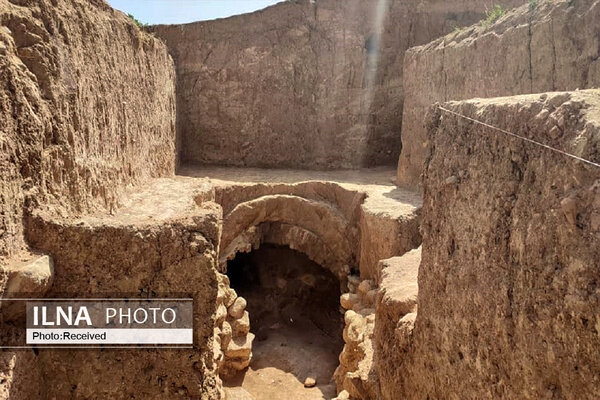Archaeologists discover Seleucid tumulus, find no traces of missing deceased

TEHRAN – Efforts made by an archaeological team finally failed to discover the corpse of a high-ranking Seleucid official following the discovery of the ruins of an ancient tumulus in west-central Iran.
The discovery of a tumulus was made in Tepe Naqarechi where archaeologists were in search of the Seleucid Laodicea Temple under the modern town of Nahavand in Hamedan province, ILNA quoted archaeologist Mohsen Khanjan as saying on Tuesday.
Naqarechi is a circular hill with a height of about eight meters situated among orchards in the southeast of Nahavand.
“A coffin and some (burial) objects were taken out during the reign of Nasser al-Din Shah (r. 1848 – 1896), and we are dealing with only a tumulus left from the Seleucid period. There is no sign of the deceased,” the archaeologist explained.
Khanjan, who led the excavation, said his team hopes to find more clues about Hellenistic life in west-central Iran.
The discovery of this tumulus may shed new light on dark corners of the Seleucid period on the Iranian plateau, Khanjan said.
Nahavand was an important town during the reign of Greek Hellenistic king Antiochus III, who ruled over the region of Syria and large parts of the rest of western Asia towards the end of the 3rd century BC.
“Nahavand was one of the towns that Seleucids built during their Iran rule over occupied Iran, using their own artisans, teachers, artists, historians, traders, … to Greekize Iranian land,”Khanjan said.
In the realm of archeology, it has always been speculated that there may be a tumulus in Iran, but this possibility finally came true after several centuries, he stated.
Future research should consider the possibility of finding two or more other (Seleucid) tombs in the area, the archaeologist said. “We hope to find more tombs in future excavations.”
Khanjan has led several archaeological seasons to possibly unearth the Laodicea Temple believed to be placed beneath the Dokhaharan’s sanctuary.
According to the archaeologist, significant objects such as bronze statues of Greek gods, a stone altar, column head, column shaft, column base, and pottery pieces had been discovered in the Dokhaharan neighborhood.
“Regarding those findings, we concluded that the history of the city of Nahavand goes far back in prehistoric times, on the contrary to what previously believed it only dates back to the Seleucid period.”
“The consequence of previous excavations determined that a Seleucid city was established on remains of a prehistoric settlement…”
In 1943, archaeologists discovered an 85x36 centimeter ancient inscription of 30 lines written in Greek calling on the people of Nahavand to obey the laws of the government. The inscription indicated the existence of the Laodicea Temple, which had been built by the Seleucid king who ruled Asia Minor, Antiochus III the Great (223-187 BC), for his wife Queen Laodicea.
Two of the inscriptions as well as four bronze statuettes, unearthed at the site, are on display in the National Museum of Iran in downtown Tehran. And, column capitals and bases are currently being used as decorations in Nahavand’s Hajian Bazaar and several other parts of the city.
Antiochus was the most distinguished of the Seleucids. Having made vassal states out of Parthia in present-day northeastern Iran and Bactria (an ancient country in Central Asia), he warred successfully against the Egyptian king Ptolemy V and in 198 BC obtained possession of all of Palestine and Lebanon.
Later, the Seleucid monarch became involved in a conflict with the Romans, who defeated him at Thermopylae in 191 BC and Magnesia (now Manisa, Turkey) in 190 BC. As the price of peace, he was forced to surrender all his dominions west of the Taurus Mountains and to pay costly tribute. Antiochus, who early in his reign had restored the Seleucid Empire, finally forfeited its influence in the eastern Mediterranean by his failure to recognize the rising power of Rome.
The Seleucid Empire reigned from 312 BC to 63 BC; Seleucus I Nicator founded it following the division of the Macedonian Empire vastly expanded by Alexander the Great. Seleucus received Babylonia (321 BC) and from there expanded his dominions to include much of Alexander's near-eastern territories. At the height of its power, the Empire included central Anatolia, Persia, the Levant, Mesopotamia, and what is now Kuwait, Afghanistan, and parts of Pakistan and Turkmenistan.
AFM
